Modern cars are equipped with information and entertainment multimedia systems with a variety of functions: from connecting smartphones to interactive touchscreen displays and sliding screens. The acoustic component is the same and the most used component of such equipment, and its sound quality is one of the most fundamental and capricious characteristics. The acoustic picture in the cabin depends on a whole range of different parts and nuances: the location and direction of the speakers, their installation, the geometric features of the interior trim and the properties of materials selected in the manufacture of the car as a whole.
Each car model requires its own unique configuration, and the acoustics and modeling specialists from HARMAN - one of the market leaders in the premium segment - take this into account when developing and fine-tuning various components of car acoustics. Using a combination of full-scale physical experiments with numerical simulation based on a combination of COMSOL ® and MATLAB ® software packages allows the company's engineers to speed up the development of the final solution, and also makes it possible to test prototypes of the audio system virtually, before creating expensive physical samples. This approach allows you to implement all reasonable customer requirements and produce high-quality customized acoustic equipment as soon as possible.
HARMAN virtual development engineers have shared with us some of the details of their workflow and some examples of developments with experimental validation of the results of acoustic modeling.
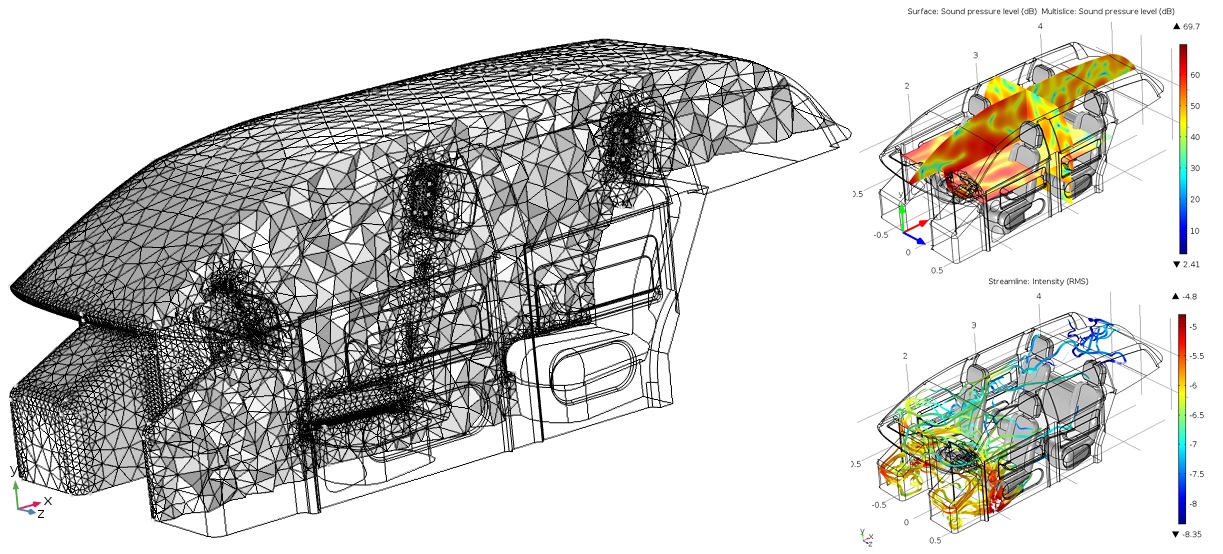
Simulation of acoustic systems: from a loudspeaker model to a comprehensive calculation of the acoustics of a car
HARMAN specialists apply computer modeling at all stages of audio system development: starting from designing individual loudspeakers and speakers, evaluating their work when placed in various enclosures, at doors and on car frame elements, and ending with large-scale studies of the acoustics of the passenger compartment taking into account individual geometric features and sound absorbing properties of the materials used.
“For us, an important criterion was the ability to simulate mechanical, acoustic and electromagnetic phenomena in one integrated environment, and we wanted to find a package that would free us from the need to write and verify our own programs,” said François Malbos, Senior Engineer acoustics in the company HARMAN.
The main such tool was COMSOL Multiphysics ® , whose capabilities in this area allow you to design speakers from scratch, taking into account all the acoustic and electromechanical connections and effects.
Design and study of individual loudspeaker models
Interdisciplinary finite element models allowed HARMAN engineers to numerically study various speaker configurations, in particular, to determine and optimize the directivity of emitters and calculate the total harmonic distortion coefficient . To study the latter, the model took into account the nonlinear properties of the magnetic components of the device (Fig. 1).
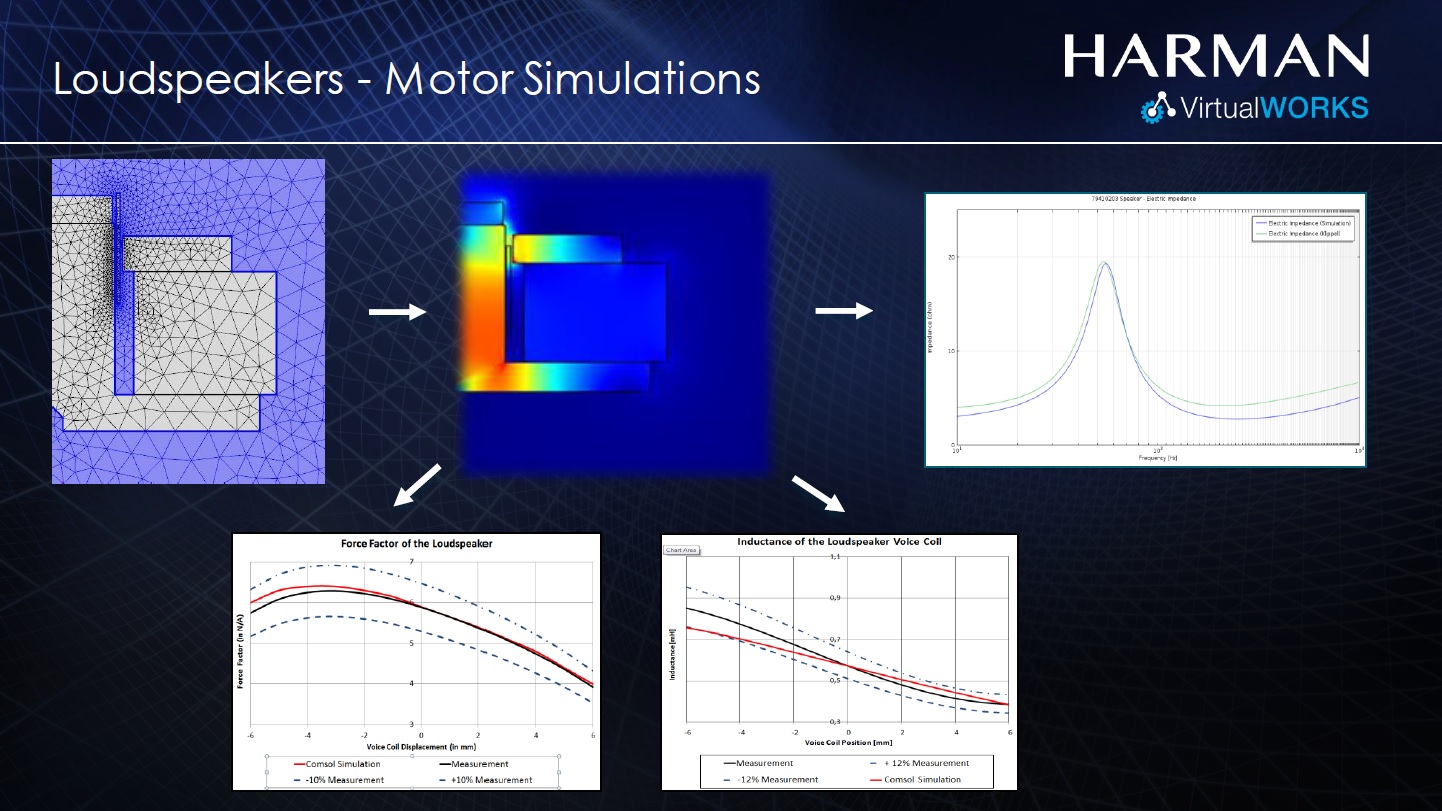
Fig. 1. The results of the electrical calculation of the loudspeaker magnetic circuit: used CE-grid, magnetic induction distribution, as well as graphs (calculated and experimental data) dependencies of impedance dynamics, voice coil inductance and coefficient of electromechanical coupling on the voice coil position.
Acoustic calculations of loudspeakers in COMSOLShort video review (in Russian): right here
The video analyzes the interdisciplinary functional COMSOL Multiphysics ® , which allows combining acoustic, mechanical and electrical calculations within one calculation model taking into account their two-way interconnections and conducting acoustic calculations of audio system components: loudspeakers, speakers, subwoofers, etc. at any level of detail and complexity.
All the main simulation results were verified experimentally (Fig. 2). One of the estimates of the quality of calculations was a comparison of calculated and measured data in the Tile-Small parameters format, which include inductance and active resistance of the voice coil, stiffness and mechanical resistance of the suspension, coefficient of electromechanical coupling (force factor), etc. Good consistency in a wide range of configurations tested confirmed the high efficiency of using COMSOL.
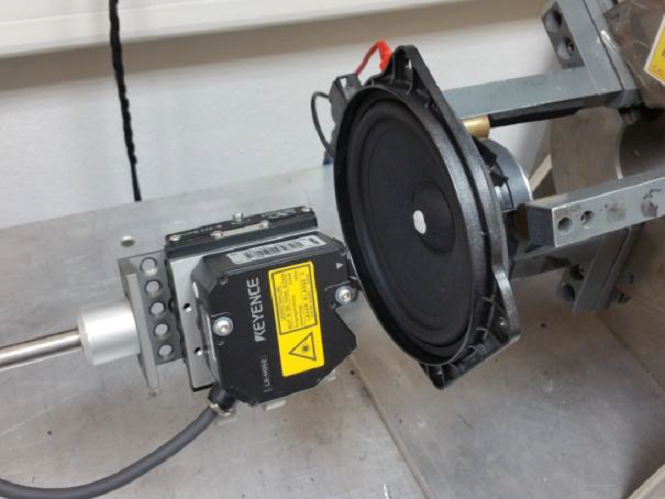
Fig. 2. Experimental studies of speakers using a laser measurement system
by the method of V. Klippel .
Techniques from HARMAN engineers for the integrated design of car audio systems
The development of a high-quality car sound system involves carrying out thorough vibroacoustic studies of individual cabin components, followed by testing in “combat conditions”, taking into account the actual geometry of the car’s internal space and the frequency-dependent absorption of the hull and skin materials. Combining the capabilities of field tests and numerical modeling, HARMAN engineers were able to expand the arsenal of available analysis methods and significantly speed up the design process, which often begins long before the advent of physical prototypes.
“We are starting to work in the early stages of car development when the designer has not yet decided on audio requirements,” explains Michael Strauss, senior manager of Virtual Product Development and Tools (VPD) at HARMAN. - In some cases, we may be aware of only the main details, such as the size and volume of the vehicle interior. However, often we need to present the concept within a few days, and then it is very difficult to fulfill customer requirements and create a high-quality audio system without virtual prototypes and ready-made developments. ”
As part of one of their projects, engineers investigated the work of the subwoofer located in the car door . The calculations made it possible to determine the resonant modes of the structure depending on the mechanical properties of the cladding and hull materials and their influence on the amplitude-frequency characteristics of the audio system. In the frequency range under consideration (from 20 to 500 Hz), it is permissible to replace the full-scale model of the electromagnetic part of the system with an equivalent concentrated model based on the previously determined frequency dependence of the radiator impedance and the coefficient of electromechanical coupling. A further increase in productivity and acceleration of the calculation was achieved by describing thin structural elements with the help of mechanical primitives such as shells.
In another study, HARMAN employees used the COMSOL ® package to simulate the Mercedes-Benz ML cabin audio system and optimize the acoustic properties of the speakers for better low-frequency sound.
The geometry for the calculation was created on the basis of manual three-dimensional scanning (Fig. 3). A team of engineers, using the preprocessing algorithm implemented in MATLAB ® , converted the resulting set of points into a finite element mesh of the inside surface of the vehicle using the STL or NASTRAN ® format.

Fig. 3. Visualization of the three-dimensional scanning of the car's interior, performed by HARMAN employees (left), and the finite-element mesh obtained on its basis (right).
Then, based on the resulting mesh, a geometry was created in the COMSOL ® interface, an acoustic calculation of the complex task was set up, and the interaction of the sound waves generated by the speaker system with the windshield, floor, seats, head restraints, steering wheel and other car parts — roof, doors and dashboards, each of which had its own absorbing properties. In Fig. 4 shows the obtained data on the distribution of the sound pressure level in the considered frequency range up to 1 kHz.
The calculation of a full-size model of the car's interior requires considerable computational resources and time. HARMAN engineers have optimized this process by moving to the calculation of only the acoustic part of the problem based on the Helmholtz equation. The excitation mechanism was defined as acoustic acceleration, which can be described in the low-frequency range on the basis of a concentrated equivalent model using Til-Small parameters. In turn, the interaction of acoustic waves with solid-state components was specified in terms of acoustic impedance boundary conditions , for which we used data on the frequency-dependent absorption coefficients of various materials. The COMSOL ® functionality also allows the use of special models for describing porous layers based on the Delaney – Bezley – Miki theory.
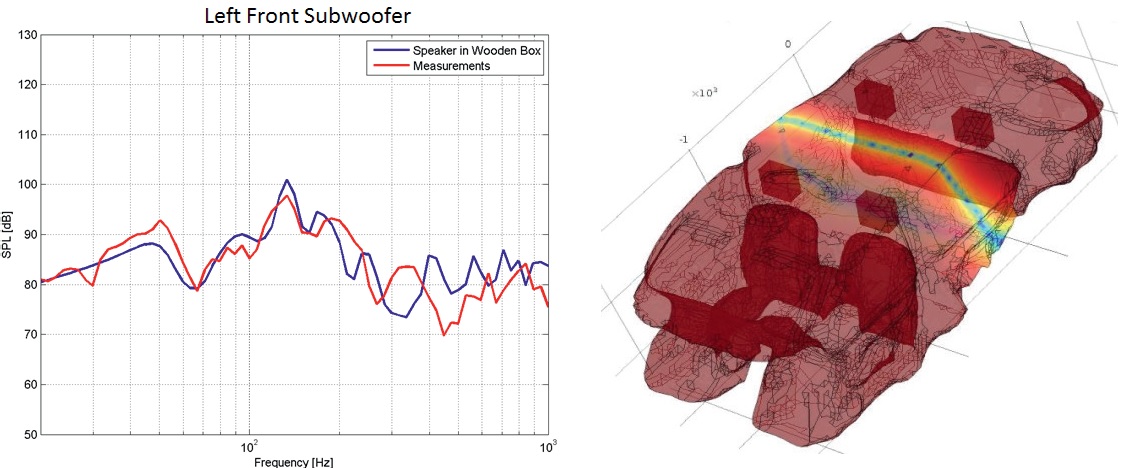
Fig. 4. The frequency dependence of the sound pressure level at a point above the driver's seat (left) and the distribution of SPL in the car (right).
To validate the results of the calculations, HARMAN created a set of special tests. In the testing tests, the speaker was mounted on a rigid frame, and four sets of microphone arrays measured the average sound pressure levels in the driver's and passenger seats (Fig. 5). The measurements were based on the impulse response processing method proposed by Angelo Farina . As can be seen from the comparison (Fig. 4), a decent correlation of results was obtained in the entire frequency range under consideration. Comparison of results for all four microphone arrays is given in the original article by the developers . After such an experimental verification, the final model made it possible to select the best speaker configuration for the vehicle. In addition, a library with frequency dependencies of sound absorption materials used in the automotive industry was verified and supplemented.
Automation of calculations
Working in strict deadlines requires high automation of all development processes. The Michael and Francois team (virtual development department HARMAN) used the integration capabilities of COMSOL ® and MATLAB ® for this purpose using the Livelink TM for MATLAB ® extension, which creates two-way communication between programs.
An extensive database was compiled with information on all types of loudspeakers used by the company in the format of frequency dependencies of Till-Small parameters. The scripts written in MATLAB ® environment streamlined both the substitution process of lumped models of speakers into the calculation in the COMSOL environment and the retrieval of the obtained results for further analysis during development.
“Everything is fully optimized and automated - when the calculation of one model ends, the next one is launched,” explains Michał Bogdanski, one of the developers. - So we can be sure that the whole process will be simple and error-free; we just run the scripts. ”

Fig. 5. Carrying out measurement tests in the cabin of the Mercedes-Benz ML (left) and the layout of the microphone arrays (in the center and right).
COMSOL and MATLAB package integrationShort video review (in Russian): right here
This video provides an overview of the two-way integration capabilities of COMSOL Multiphysics ® and MATLAB ® packages using the LiveLink TM for MATLAB ® extension. With it, you can open COMSOL Multiphysics ® models in the MATLAB ® interface, access any node, perform additional pre- or post-processing, and automate calculations using custom scripts and loops . In this case, you do not need to delve into the COMSOL ® API language in detail due to the special mphnavigator compiler for MATLAB ® .
Virtual tuning of car audio systems
Using proven computer models allows HARMAN engineers to begin developing an audio system design long before the car’s design is completed. The final fine tuning is carried out at the final stage after the audio system is installed in the car ready for a test drive.
The ability to evaluate an audio system based solely on modeling improves the quality and speed of product development at the company, reduces the time needed to respond to the client, and also reduces the cost of making design changes, giving engineers more freedom to design.
Currently, the company is working on a reproduction system, which, based on the results of modeling and signal processing, will allow you to listen to, evaluate and compare any designed audio systems, including low, mid and high frequency speakers. For these purposes, engineers have integrated into their design models accounting acoustic effects in the human ear and scripts for processing and recording binaural impulse response (Binaural impulse Responces - BRIR).
“The advantage of modeling is that the system engineer can sit at the table, put on headphones and start setting up the system without the car itself. Using modeling, we, HARMAN engineers, can evaluate, optimize and calculate the characteristics of the proposed audio system, even if it does not yet exist physically, ”summarizes Michael Strauss.
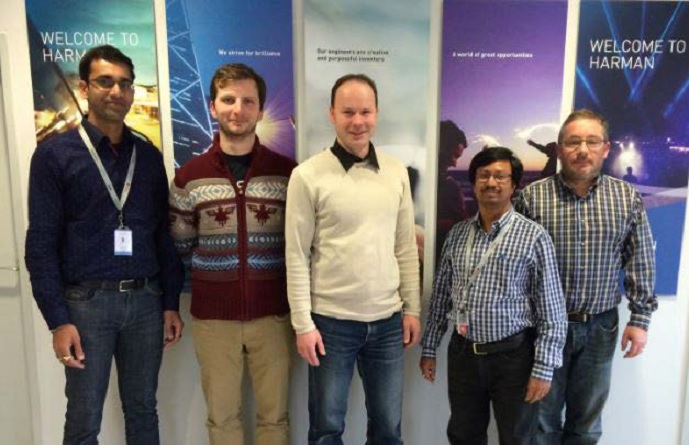
Fig. 6. The Virtual Product Development and Tools (VPD) team of HARMAN companies: Maruthi Srinivasarao Reddy, Michał Bogdanski, Michael Strauss, Ninranjan Ambati and François Malbos.
Comments on COMSOL Multiphysics ® functionality for acoustic engineering calculations and sample models available for review.
The note briefly touched upon several variations of building a model of audio systems and their constituent components in COMSOL ® . The following examples are available on our website with detailed step-by-step assembly instructions:
The above examples refer to classical full wave calculations based on the finite element method (FEM) . In addition to them, the latest versions of COMSOL include an interface for modeling acoustic phenomena in the time domain based on the discontinuous Galerkin method (DG-FEM) with an explicit solver , and also support calculations in terms of geometric acoustics. In addition, in the new release 5.3a it is expected to add an interface based on the boundary element method (BEM) for conducting hybrid FEM-BEM modeling in acoustic applications, including with joint calculations of acoustic waves and vibrations in elastic bodies (acoustic-structure interactions).
These techniques can be effectively used in the design of car audio systems (Fig. 7). Examples and more detailed information can be found in the report of the head of the development of acoustic applications of COMSOL Mads Jensen (Mads Herring Jensen) at the international conference on car sound AES 2017.
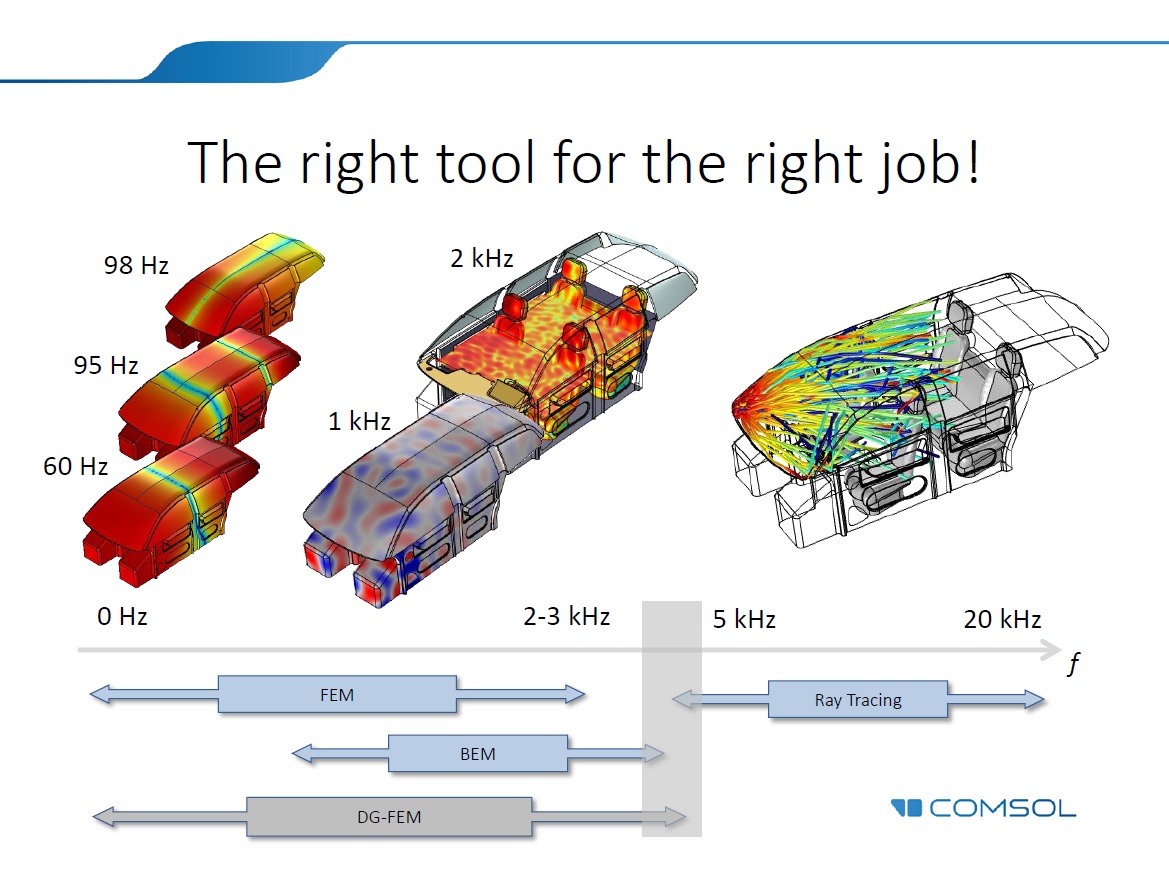
Fig. 7. Available acoustic calculation methods in COMSOL ® : FEM, BEM, DG-FEM, Ray Tracing. The areas of their application, depending on the frequency range.
Additional Information
For a more detailed acquaintance with the described methods of computer-aided audio design, we invite you to participate in the joint webinar COMSOL ® and HARMAN , which will be held on November 16, 2017.
More examples of the use of COMSOL ® in acoustic calculations by research teams from B & K, Knowles, ABB and NASA can be found in the new issue of COMSOL NEWS 2017: Special Edition Acoustics .
COMSOL NEWS 2017: Special Edition Acoustics- Virtual tuning car audio. HARMAN, France
- Development of industrial and measuring microphones. Bruel & Kjaer, Denmark
- The calculation of the acoustic characteristics of the averaged flow in rocket systems. NASA, USA
- Motorcycle noise reduction. Mahindra Two Wheelers, India
- Investigation of magnetostriction effects and noise in power transformers. ABB, Sweden
- Vibration analysis of the noise generated by the gearbox of the car. COMSOL, USA / Sweden
- Advanced acoustic research of metamaterials. Duke University (USA)
- The effects of vibrations on buildings near airports. NGI, Norway
- Development of hearing aids. Knowles, United States
- Non-destructive acoustic control in water mains. Echologics, Canada
- New design of electrostatic headphones. XI Engineering and WAT, UK
